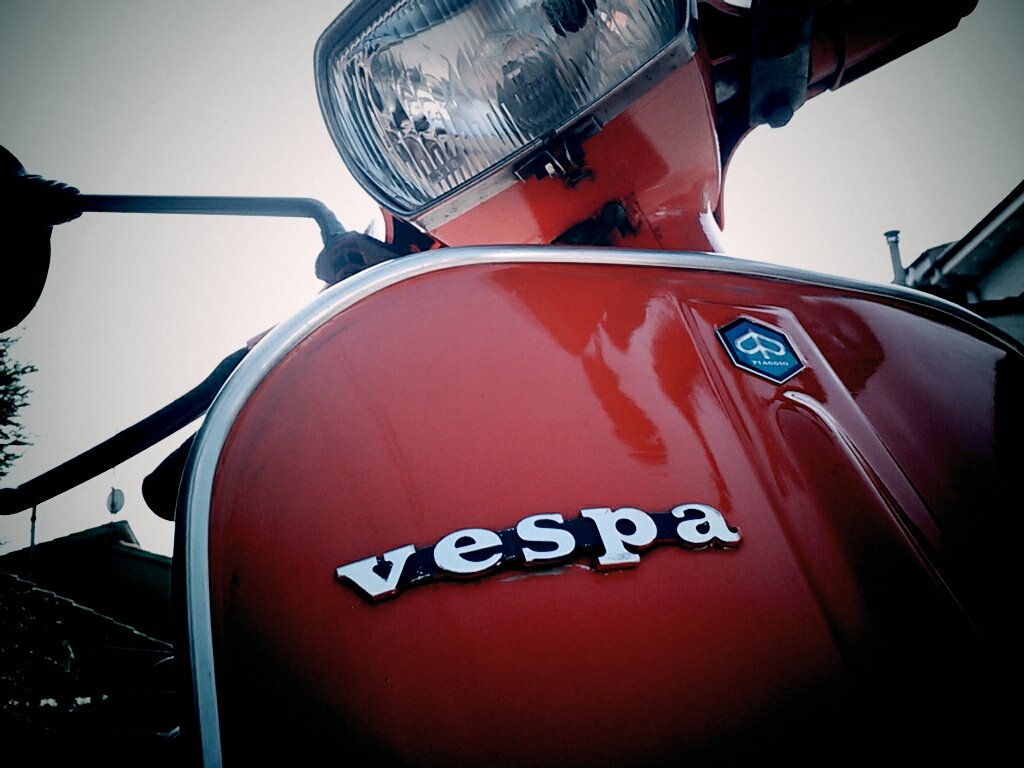The first model of Vespa was presented by its designer, Ingegner Corradino d’Ascanio, in 1945 to the owner of the Piaggio manufacturing company, who had commissioned the project of an affordable vehicle accessible to the masses.

"Vespa" by metesmiedo is licensed under CC BY-NC 2.0
In asking d’Ascanio to design the new means of transportation, the owner of Piaggio said: “Voglio un mezzo economico e pratico che metta l’Italia su due ruote, ma non la solita motocicletta. Solo Lei può affrontare il problema con mentalità del tutto nuova. Ha perciò carta bianca, ma la cosa va fatta subito.”
1. Can you make a list of the key words in the text above?
2. Can you define the term “carta bianca”?
3. What is the main spirit of Piaggio’s request to d’Ascanio? Can you express it in Italian?
The entertaining anecdote about the birth of the name “Vespa” is recounted as follows:
“Enrico Piaggio guardò e riguardò la strana motocicletta e disse senza muovere i muscoli della faccia: «Con quella vita sottile e quel ronzio sembra una vespa!» Tutti conoscono come è andata la leggenda, e gli storici del costume scriveranno poi che fu così che venne battezzato lo scooter ideato e realizzato da Corradino d’Ascanio […]. Quasi nessuno ricorda la risposta di d’Ascanio: «Peccato che non vola!».”
“It looks like a wasp!” were the first words Engineer Piaggio uttered when he first saw the model. And the name stuck to it, perfect for its ability to describe the shape of the object, the buzzing sound of the engine, and perfect to remember and pronounce not only in Italian.
Read the following passage summing up the birth of Vespa:
“La società Piaggio venne fondata a Genova nel 1884 da Rinaldo Piaggio per costruire carrozze e vagoni ferroviari. Dopo la Seconda Guerra Mondiale Enrico Piaggio, figlio di Rinaldo, decise di cambiare completamente genere di produzione della sua azienda e puntò alla creazione di un veicolo a due ruote, a basso costo e di largo consumo. Si affidò così alla genialità di Corradino d’Ascanio, ingegnere aereonautico, che trovò la soluzione perfetta. Il nuovo veicolo aveva le ruote più piccole, e una carrozzeria più comoda di quella di una moto. Di Vespa sono stati prodotti 138 modelli, per un totale di oltre 16 milioni di esemplari. A Pontedera si trova il museo dedicato alla Vespa e alla sua storia unica.”
Summary of key facts about Vespa:
1884: nasce a Genova la società Piaggio
1946: nasce in Italia, negli stabilimenti della Piaggio, la Vespa
1949: a Ginevra il primo Vespa Club del mondo
114 i paesi nel mondo in cui è commercializzata la Vespa
16 milioni le unità prodotte all'anno nel 2000
Based on the information above in this section and on the key facts listed above, find the following information about Vespa and write them down in Italian, if you can:
1. When and where was Piaggio founded?
2. Who is Corradino d’Ascanio?
3. Why was Vespa commissioned? What was the main purpose that the owner of Piaggio wanted it to serve?
4. When was the first Vespa scooter produced?
5. What is the difference between Vespa and a motorcycle?
6. How many models of Vespa have been produced?
7. Where is the Vespa museum?


